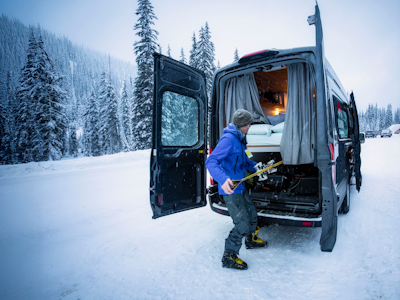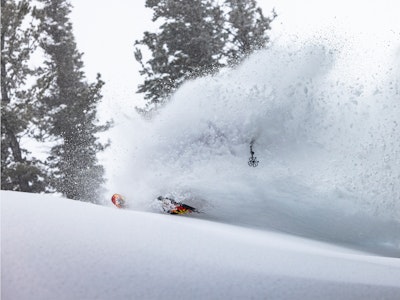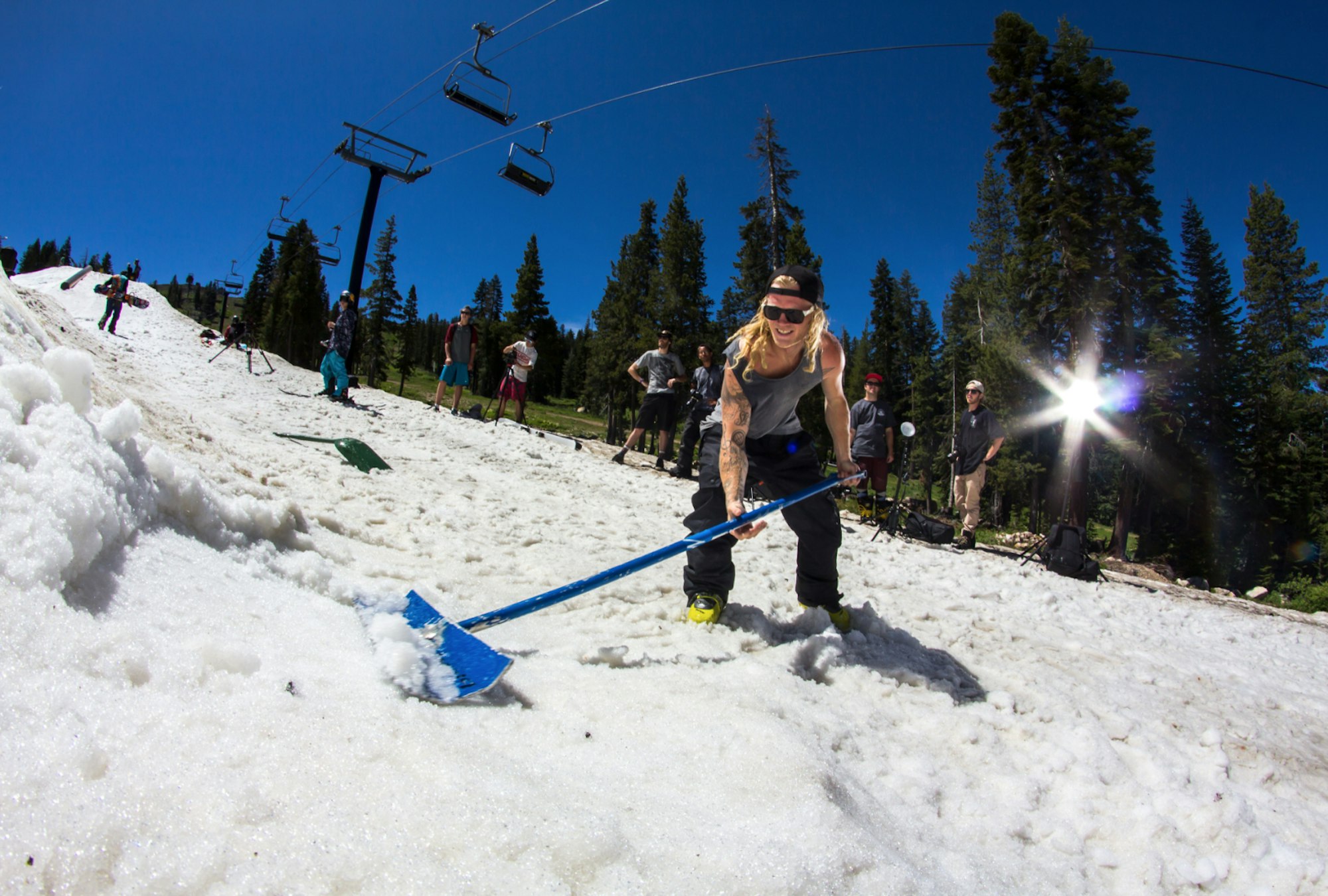Last month, Boreal Mountain Resort, located on Donner Summit in the Lake Tahoe region of California, announced that it would become the first North American resort to implement a “snow factory” — a snowmaking system that can produce snow regardless of outside temperature. The snow factory will be used specifically with Woodward Tahoe, based at Boreal, in order to guarantee that campers have lift-accessed snow to enjoy all summer long. Traditional snowmaking systems generally need a temperature of 28 degrees Fahrenheit and below to operate. The snow factory system, developed by Italian brand TechnoAlpin, can produce artificial snow at temperatures way above freezing. The snow factory has been used effectively at several European ski resorts such as Lenzerheide, Switzerland and Geilo, Norway.
The technology has been compared to the process of air conditioning: Water is sprayed onto the inner wall of a closed, double walled “icemaker” container. A refrigerant is then injected between the two walls at a temperature of negative 22 degrees Fahrenheit, cooling down the inner wall and causing the water to freeze. Ice crystals are produced and funneled into the machine’s snow distribution system, through which they can be spread across the slopes.


“It made a lot of sense for both us and TechnoAlpin,” explains Phoebe Mills, director of operations at Woodward Tahoe. “We want to have snow at any temperature in order to guarantee there’s snow in the summer and to have a reliable open date in the winter as well.” Mills says the string of recent winters with below average snowfall “played a big part in [their] decision [to implement the new system].” Mills also explains that she and her counterparts hope to have a wider variety of terrain park features available for campers due to the increased snow coverage.
The new tech should help boost Woodward Tahoe’s summer attendance and ensure Boreal can open early in the season, but there has been chatter regarding potential environmental impacts of a system such as this. California, despite a wet winter in 2015-16, is still in the midst of a four-year, record-breaking drought. “To have [a resort] take snowmaking technology and blow in the heat of the summer, especially in California which is dying for water, to me it seems like a middle finger to everybody that’s trying to fight climate change and to the issue as a whole,” says Chris Steinkamp, executive director of Protect Our Winters (POW).
How the snow factory works.
Steinkamp adds that he and POW understand that snowmaking is a necessary operation to ensure resorts can open on time and have sufficient snow coverage to guarantee skiers continue to visit. However, he believes diversifying summer offerings—mountain biking, alpine slides, etc.—is a better non-winter option than utilizing snowmaking in the summer. He adds that “if [resorts] are making snow, we get it, but we hope that resorts, like Aspen Snowmass, are also doing things that actively address the issue on the policy and advocacy side, too. That evens it out and makes a difference.”
To its credit, Boreal Mountain Resort and its parent company Powdr Corp are not ignorant of the effects of climate change. Boreal utilizes a company called Renewable Choice Energy to purchase renewable energy credits (RECs). RECs are tradable, non-tangible energy products that represent proof that a single megawatt-hour of electricity was generated from a renewable energy source—like wind and solar farms—and pumped into the power grid. RECs are purchased by organizations that may have trouble utilizing renewable energy directly, in order to offset the carbon emissions generated by their energy use.
Boreal estimates how much electricity it will use at the beginning of each fiscal year and then purchases RECs to negate that. By doing so, Boreal is able to “offset a little more than 100 percent of our electrical usage,” according to Shaydar Edelmann, vice president of operations and development at Boreal. The resort reduced its carbon emissions output by 11-percent in 2015.
Edelmann goes on to explain how the resort’s snow factory system is sustainable. “We have a reservoir on site, with well water that supplements our surface water reservoir,” he says. “The ultimate water use is 11 gallons per minute and the snow factory converts 100 percent of that to snow. When it melts it immediately re-supplies the water… the vast majority we seep back into the same water supply.”
The snow factory blanketed Boreal in summer snow.
Steinkamp believes that, rather than adapting to the issue of warming winters and lower snow accumulation impacting summer ski camps, that Boreal and Woodward should be putting forth energy to combat the problem. “To diversify with such an egregious climate change cause, to be making snow, just seems like complete ignorance of the issue,” states Steinkamp. “It just seems like they’ve taken this idea of adapting too far.”
Steinkamp does note that he hasn’t spoken with anyone at Boreal, but is intrigued to hear their perspective on the issue.
It will be interesting to see how Boreal and Woodward’s first summer utilizing the snow factory turns out, but the environment will continue to be a talking point throughout the process.
“We consider these questions as we make these decisions and will continue to evaluate [the snow factory] as we use it in the summer,” says Edelmann. “The energy and water use are serious parts of the decision.”
Woodward Tahoe summer freeski camp begins June 12 and lasts until August 6.
For more information on Woodward, click here.
To learn more about POW, click here.

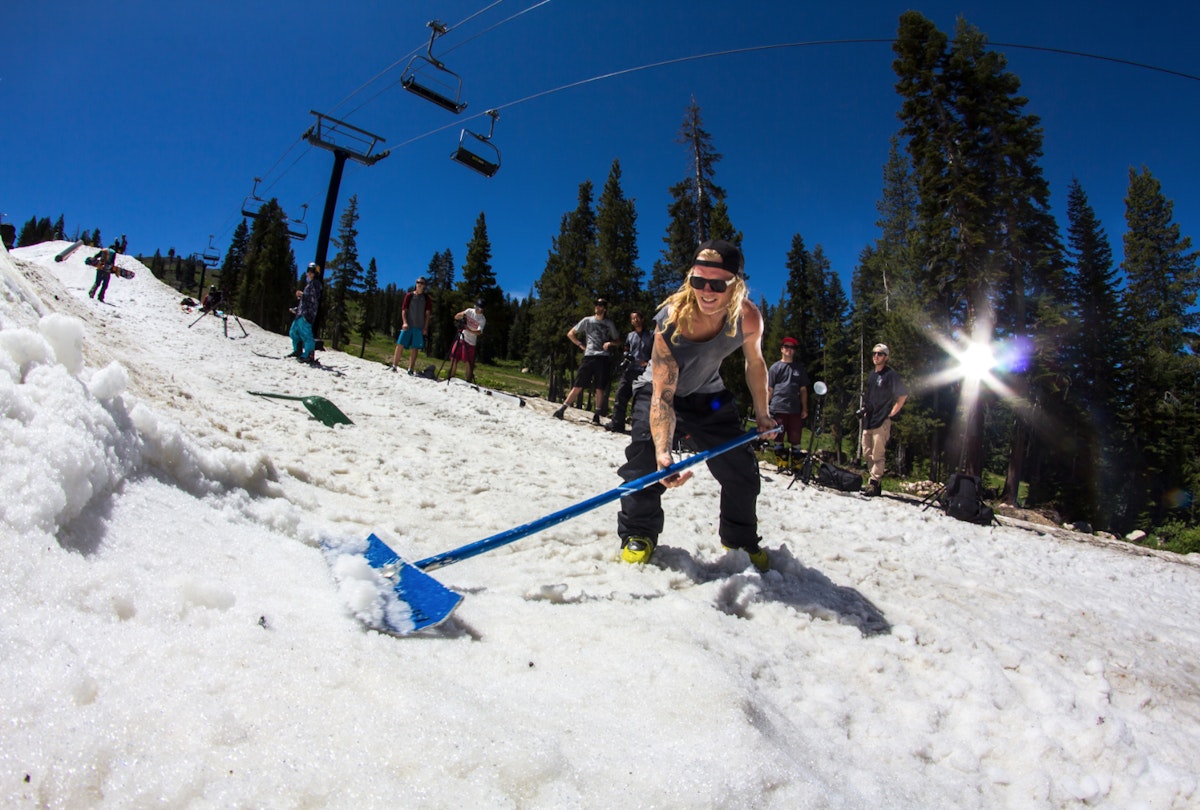


![[GIVEAWAY] Win a 4-Night Karma Campervan Rental and go Ski the Powder Highway](https://www.datocms-assets.com/163516/1767816935-copy-of-dji_0608-1.jpg?w=200&h=200&fit=crop)
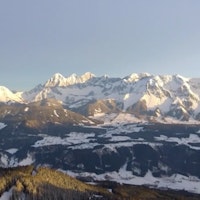

![[GIVEAWAY] Win a Legendary Ski Trip with Icelantic's Road to the Rocks](https://www.datocms-assets.com/163516/1765233064-r2r26_freeskier_leaderboard1.jpg?auto=format&w=400&h=300&fit=crop&crop=faces,entropy)
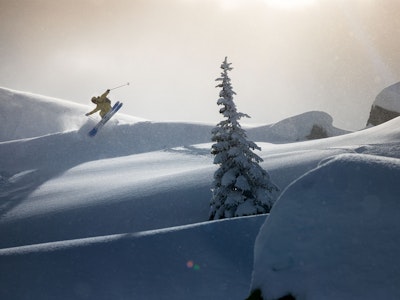


![[GIVEAWAY] Win a 4-Night Karma Campervan Rental and go Ski the Powder Highway](https://www.datocms-assets.com/163516/1767816935-copy-of-dji_0608-1.jpg?auto=format&w=400&h=300&fit=crop&crop=faces,entropy)

